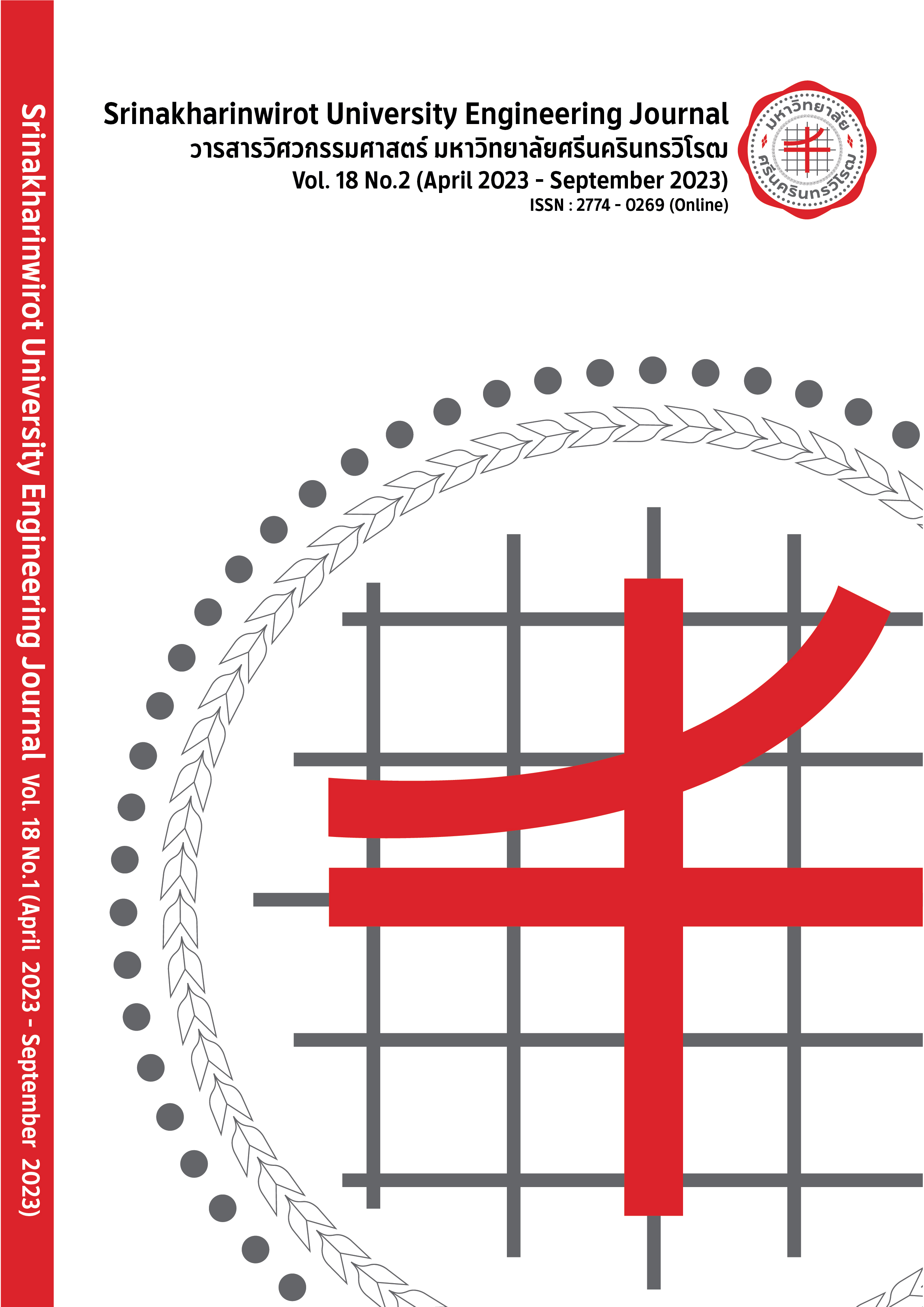Defective Rate Reduction from Foreign Matter Contamination in Female Connector Plug Manufacturing Process
Main Article Content
Abstract
The objective of this research is to reduce defective rate from foreign matter contamination defect of Female Connector by applying the approach of Six Sigma (DMAIC) , which consists of 5 phases; starting from the Define phase, in which the injection molding process of 6P model was studied. Secondly, in the Measure phase, the required sample size was calculated, and the Attribute Agreement Analysis was performed. Then, in the Analyze Phase, it was found that there were 5 significant factors related to the defective rate. In the Improvement phase, two non-adjustable factors have been improved by creating a new particle cover to be more closely and set the cleaning frequency to 1 time per shift. The central composite design was performed for the remaining 3 adjustable factors and determined the optimum levels. The optimum values are the mold opening speed of 30 millimeters per second, delay time of 1 second and runner pushing pressure of 15 bar. Finally, work instructions and control plan have been revised in the Control phase. Which after tracking process improvement results, it was found that the defective rate from contamination defects of 6P female connector plug was reduced from 2.36% to 0.78%, which was reduced by 1.58%. In additional, the defective cost was reduced from 5,499,036 baht to 1,826,099 baht, which equivalent to a cost a saving of 3,672,937 baht per year.
Article Details

This work is licensed under a Creative Commons Attribution-NonCommercial-NoDerivatives 4.0 International License.
Copyright belongs to Srinakharinwirot University Engineering Journal
References
W.G Frizelle, Injection molding technology in Applied Plastics Engineering Handbook. Elsevier, pp. 205-214, 2011.
S. Kulkarni, Robust process development and scientific molding: theory and practice. Carl Hanser Verlag GmbH Co KG, 2017.
C.G Gogos and Z. Tadmor, Principles of polymer processing. John Wiley & Sons, 2013.
Petroleum Institute of Thailand. (2014, December) . Plastic Intelligence Monthly [Online]. Available: http://plastic.oie.go.th
W. Khumsamit, "Improvement of parameter setting for plastic injection molding process in case of mul ti-defect types," M.S. thesis, Department of Industrial Engineering, Engineering, Chulalongkorn University, 2008.
I. Rattanabunditsakun, "Black dot defect reduction in plastic injection moulding process," M.S. thesis, Department of Industrial Engineering, Engineering, Chulalongkorn University, 2014.
A. Maged, S. Haridy, S. Kaytbay and N. Bhuiyan, "Continuous improvement of injection moulding using Six Sigma: case study," International Journal of Industrial and Systems Engineering, 32(2): p. 243-266, 2019.
A. Alshammari et al., "Quality improvement in plastic injection molding industry: applying lean six sigma to SME in Kuwait," in Proceedings of the International Conference on Industrial Engineering and Operations Management. 2018.
T. Rattanaruengyot, "Defect reduction in plastic pipe extrusion process," M.S. thesis, Department of Industrial Engineering, Engineering, Chulalongkorn University, 2014.
C. Rakthongthai, "Defective reduction from crack defects in painting process of motorcycle parts," M.S. thesis, Department of Industrial Engineering, Engineering, Chulalongkorn University, 2020.
W. Saleesing, Process Revolution by Six Sigma techniques of Champion and Black Belt. Bangkok: Sirivatana Interprint, 2005.
K. Ploypanichcharoen, Process Capability Analysis.4th ed. Bangkok: Technology Promotion Association (Thailand-Japan), 2006.
Measurement Systems Analysis (MSA), AIAG Standard, 4th ed. pp. 131-150, 2010.
C. Simion, "Measurement system analysis by attribute, an effective tool to ensure the quality of the visual inspection process within an organization," in MATEC Web of Conferences EDP Sciences, 2019. Vol. 290, p. 05004.
C. Marques et al., "Improving operator evaluation skills for defect classification using training strategy supported by attribute agreement analysis," Measurement, Elsevier, Vol. 119, pp. 129-141, 2018.
Y. Fasser and D. Brettner, Process Improvement in the Electronics Industry. New York: John Wiley & Sons Inc., 1992.
T. Rakić et al., "Comparison of full factorial design, central composite design, and box-behnken design in chromatographic method development for the determination of fluconazole and its impurities," Analytical Letters, Vol. 47, Issue 8, pp. 1334-1347, 2014.
D.C Montgomery, Design and analysis of experiments / Douglas C. Montgomery. 8th ed. Hoboken, N.J. : Wiley, 2013.
M. Chotivirat, “A defects reduction in plastic part process,” M.S. thesis, Department of Industrial Engineering, Engineering, Chulalongkorn University, 2007.


